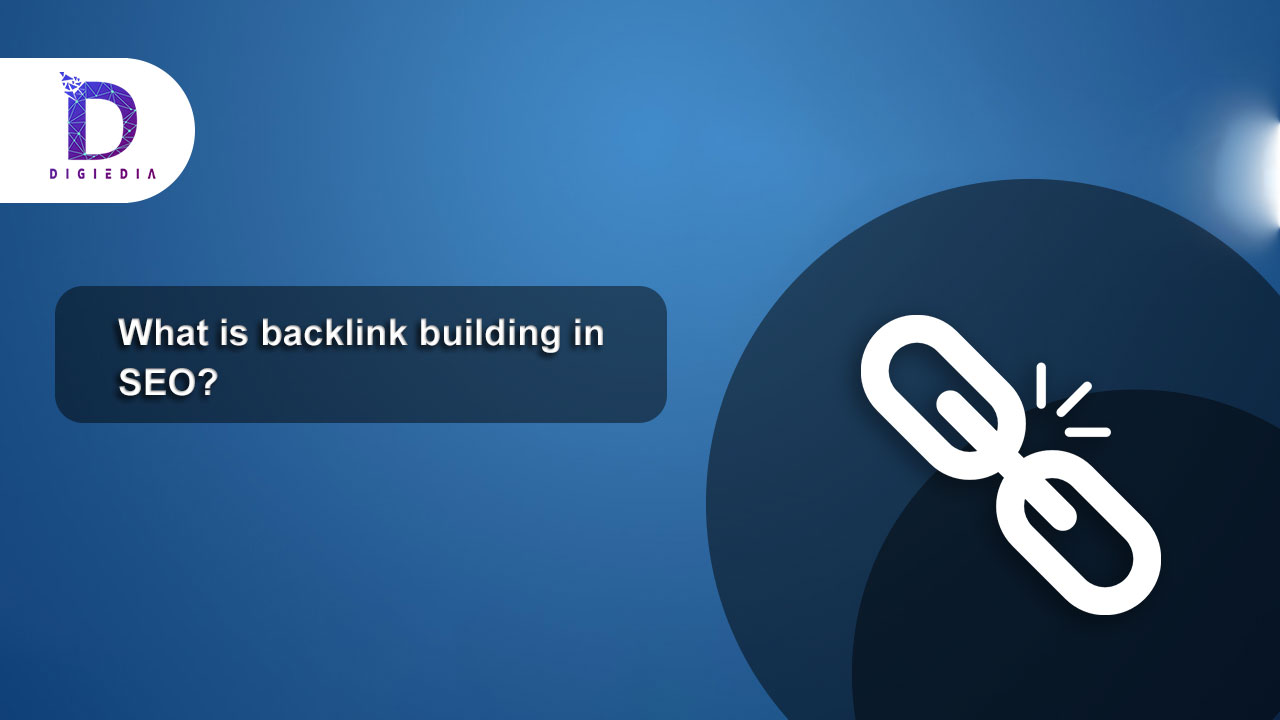
What is backlink building in SEO?
- DIGIEDIA
- Blogs, SEO (Search Engine Optimisation)
- 08 March 2022
- No Comments
The process of obtaining backlinks from other pages to your website is known as backlink building in SEO. The purpose of backlink building in SEO is to increase the number of elevated inbound links to a site in order to improve ranking. Because hyperlinks are one of the most essential ranking elements for search engines, link creation is crucial. When crawling a webpage, search engines like Google look at the number of high-quality inbound links. A web page’s ranking will improve if it has more high-quality links.
Because pages with much more backlinks are more likely to rank higher, it’s critical to:
- Make high-quality content that people will want to link to, and
- To assist you get more backlinks, use link-building tactics.
Because backlink building in SEO takes time and work, getting started sooner than expected will offer you an advantage over your competition and provide significant long-term benefits to your website.
What is the Process of Link Building?
Earning backlinks from reliable, high-quality websites is the best strategy to increase your reputation through link building. If you have a lot of backlinks from spammy, unrelated sites, they aren’t going to help you rank higher.
Backlinks can be obtained in a variety of ways, including:
- Blogging as a guest
- Promotion on social media
- Hands-on outreach
- Backlinks from competitors’ websites are being pursued.
- Soon, we’ll delve into particular strategies.
However, please remember that backlinks aren’t everything; you should prioritize providing valuable, high-quality content first.
There are three types of links.
It’s critical to understand the various types of links while developing a link-building strategy.
The most crucial types of links to be aware of are listed below.
Nofollow vs. Follow is the first distinction to make.
Whenever you want to link to some other website but don’t want Google to crawl it, you should utilize nofollow links.
To make a link a nofollow hyperlink, you must include the rel=”nofollow” attribute in the link’s code. Nofollow links tell Google that the hyperlink isn’t supposed to pass PageRank.
For two reasons, the nofollow hyperlink is beneficial:
- If you ever need to hyperlink to a website but don’t want to support it, use this phrase.
- When the relationship yields a profit. Google introduced rel=” sponsored” (and rel=”ugc”) as a new type of backlink attribute, preferring that users use rel=” sponsored” instead of rel=”nofollow” for paid or lucrative connections (such as paid adverts, banner ads, affiliate links, and sponsored content).
Keep in mind that nofollow links do not immediately pass authority. They can, however, help you with brand awareness and referral traffic.
Regular links with qualities that tell Google that the hyperlink should pass PageRank are called follow links.
If you wanted to do something like this, you’d use the follow link:
- Transfer authority to a reputable website.
- Assist search engine bots in comprehending the content.
User-generated links
When it comes to SEO, using user-generated hyperlinks as a link-building method isn’t the best option. Those that attempted user-generated linking in the past were penalized by Google.
You build user-generated links with the intention of promoting your own work. They are also frequently of lower quality than other Google-favored link-building techniques.
Here are some instances of user-generated links:
Blog comments that haven’t been moderated
Widgets and infographics embedded
Advertisements on user profile pages, press releases, or guest post signatures with well optimized anchor text
Although backlinks from these sources won’t harm your site, it’s not a good idea to focus your efforts on this method because these connections are unlikely to pass any authority.
Links from other blogs or websites that are natural
Readers that come across your website and include a link on their website or blog without being requested create natural links. You don’t have to ask other bloggers or users for a backlink with this link type.
The majority of natural links aren’t found in promoted or paid material, and they’re also not tracked. They’re frequently inserted within the content of another blogger or webmaster in order to bring value to their viewers.
This means that natural links are more likely to appear in videos, blog posts, photos, and other product descriptions on a website. A natural connection back to the site is deemed a “good link” by all accounts.
How to Build Links That Work
- Request Links Outreach can start taking a lot of effort with little payoff, but with the right tools, it can be more effective. If you want a backlink from a website that you think would help raise the authority of your website or page, you’ll probably have to approach the webmaster directly to make this happen.
- Add Links by Hand
Manual link building is when you place links on your own website, whether it’s through a blog comment, a guest post, or a press release. When you add links manually, you usually have entire control over the strategies’ outcome.
- Obtain Links
You should develop a strategy that allows you to obtain editorially placed links to gain a true competitive edge through links. Earning links takes a lot of time and effort, but it pays off handsomely. As a result, be ready to devote time and resources to gaining links. You’ll be able to land links that your competitors will find difficult to duplicate.
Conclusion
You will need to put in the regular effort, just like any other part of SEO. While link building appears to demand more effort than most SEO techniques, it will pay off in the end and will persist for a long time.
With enough patience and determination in applying your link-building strategies, your website may improve to the point where you won’t need to work as hard for links in the future. Instead, you can concentrate on creating excellent content that will entice other websites and companies to link to it.
